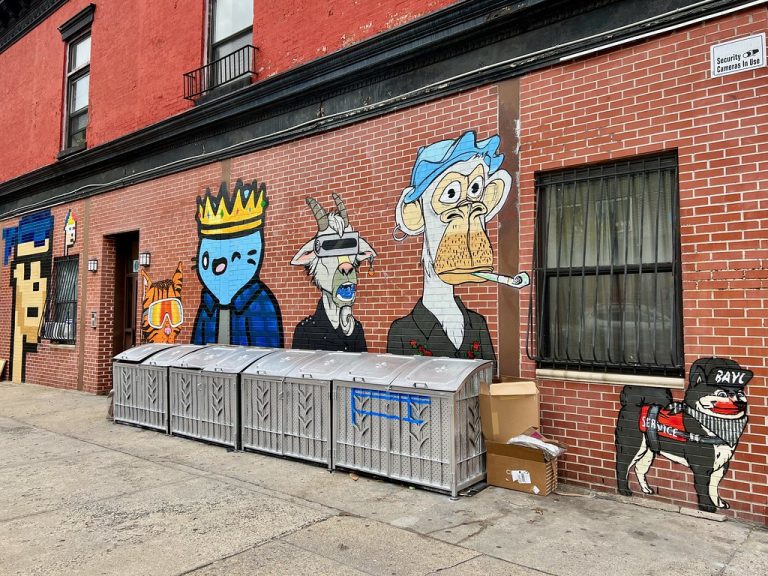The world of digital assets has been completely transformed by a new technology called Non-Fungible Tokens (NFTs). These unique digital tokens have redefined ownership, especially for digital art, music, and collectibles. But what exactly are nft , and why have they become such a hot topic? In this blog, we will explore the world of NFTs, how they work, and their impact on various industries.
What Are NFTs?
NFTs, or Non-Fungible Tokens, are a type of digital asset that represent ownership or proof of authenticity for a unique item, stored on a blockchain. Unlike cryptocurrencies like Bitcoin or Ethereum, which are “fungible” (meaning each unit is the same as every other unit), NFTs are “non-fungible,” meaning each token is distinct and cannot be replaced by another identical item.
NFTs are used to represent ownership of digital items like:
- Art
- Music
- Videos
- Virtual real estate
- In-game items
Each NFT contains unique information (metadata) that distinguishes it from any other NFT, ensuring that the owner of the token truly owns a one-of-a-kind digital asset.
How Do NFTs Work?
NFTs are primarily built on blockchain technology, the same decentralized digital ledger system that powers cryptocurrencies. Most NFTs are currently created using the Ethereum blockchain, which allows for the creation of unique digital assets through a standard called ERC-721.
Once an NFT is created (or “minted”), it is added to the blockchain, making its ownership and transfer history transparent and immutable. Because of this, NFTs are highly secure and provide a way to prove ownership in the digital world.
Why Are NFTs So Popular?
- Digital Ownership: For the first time, artists and creators can tokenize their digital content and sell it as a unique item. This has opened new revenue streams for digital creators, enabling them to sell their work directly to collectors and fans.
- Scarcity and Exclusivity: NFTs allow creators to offer limited editions or even one-of-a-kind digital assets. The concept of rarity drives demand, leading to high prices for certain NFTs.
- Smart Contracts: NFTs often come with smart contracts, which can ensure that creators receive royalties each time the token is resold. This provides ongoing revenue for artists beyond the initial sale.
- Collectibility: Just like traditional collectibles (e.g., baseball cards or rare stamps), NFTs attract collectors. Digital collections are not bound by physical storage, and their ownership can be easily proven.
NFTs in Different Industries
- Art: Digital artists can now create and sell their works as NFTs, bypassing traditional art galleries and auction houses. Artists like Beeple have sold NFTs for millions of dollars, attracting mainstream attention to this new form of digital art ownership.
- Gaming: NFTs are revolutionizing the gaming industry by allowing players to truly own in-game items, skins, and even virtual real estate. Popular games like Decentraland and The Sandbox allow users to trade virtual land as NFTs, which can be bought, sold, or built upon.
- Music: Musicians and artists are exploring NFTs as a way to sell exclusive albums, tracks, or concert experiences. By releasing music as NFTs, artists can engage with their fans in unique ways and retain greater control over their distribution.
- Sports Collectibles: Platforms like NBA Top Shot have turned memorable sports moments into collectible NFTs. Fans can now own iconic plays from their favorite teams and athletes.
Challenges Facing NFTs
Despite their rapid rise, NFTs face several challenges:
- Environmental Concerns: The blockchain networks that host NFTs consume large amounts of energy, leading to concerns about their environmental impact.
- Market Volatility: The NFT market is still young, and prices can be highly volatile. The value of NFTs can fluctuate dramatically, and many worry about the sustainability of current prices.
- Legal and Copyright Issues: Questions of copyright ownership and intellectual property rights are still being debated. Since anyone can mint an NFT, verifying the rightful owner of digital content is a key concern.
Conclusion
NFTs are reshaping the way we think about ownership and value in the digital world. By providing artists, creators, and collectors with new ways to interact with digital content, NFTs have unlocked a world of possibilities. While challenges remain, it’s clear that NFTs have already made a lasting impact on industries ranging from art to gaming.
As NFTs continue to evolve, they could transform not only digital content but the way we understand and interact with all forms of value and ownership. Whether you are an artist, a collector, or simply a curious observer, the world of NFTs offers a fascinating glimpse into the future of digital assets.
